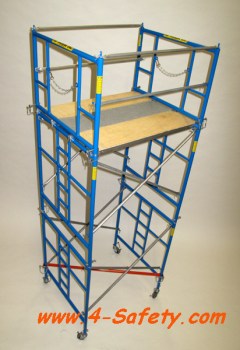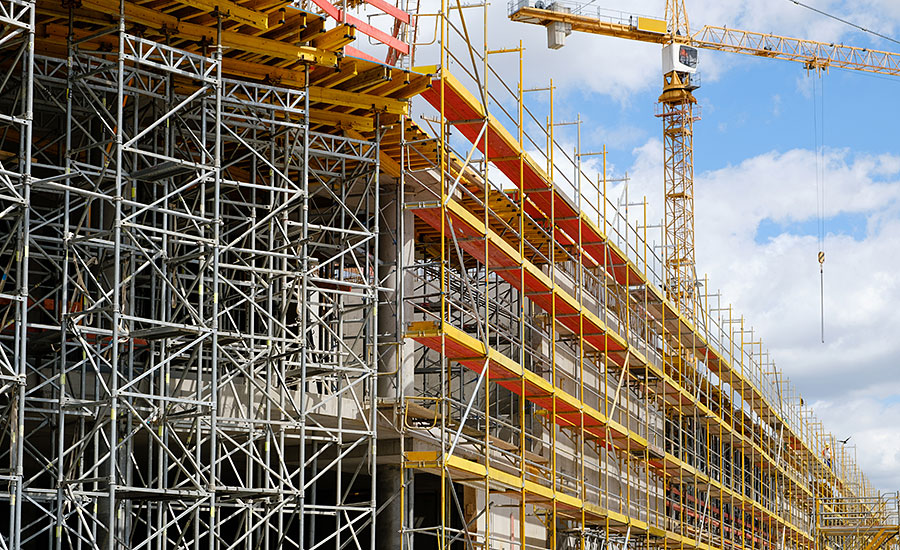A Comprehensive Guide to the Vital Attributes of Scaffolding in Modern Construction
The landscape of modern-day building and construction increasingly counts on reliable scaffolding systems that focus on technology, performance, and safety and security. As projects grow in complexity, understanding the vital functions of scaffolding ends up being important for making certain employee safety and security and maximizing task timelines. This overview discovers numerous kinds of scaffolding, highlights key safety features, and examines material advancements that add to efficiency and sustainability. Nonetheless, the effects of these aspects prolong far beyond plain building and construction techniques, motivating a better take a look at how they influence total job success and worker well-being.
Sorts Of Scaffolding
Although scaffolding systems can vary extensively in design and application, they normally drop into a number of distinct classifications that deal with different building demands - Scaffolding. The most common kinds consist of supported scaffolding, suspended scaffolding, and rolling scaffolding
Sustained scaffolding is composed of platforms supported by a structure of posts, which offer a steady and raised functioning surface area. This type is usually made use of for tasks that need substantial elevation, such as bricklaying or outside paint.
Put on hold scaffolding, alternatively, is made use of for tasks calling for accessibility to high altitudes, such as cleansing or fixing structure facades. This system hangs from another structure or a roof, permitting employees to reduced or increase the platform as needed.
Rolling scaffolding attributes wheels that permit for very easy flexibility throughout a task site. It is particularly useful for jobs that call for frequent moving, such as indoor job in large spaces.
Each kind of scaffolding is made with certain applications in mind, making sure that building projects can be executed successfully and successfully. Comprehending these classifications is essential for choosing the suitable scaffolding system to fulfill both job demands and website problems.
Key Safety And Security Functions
Safety is paramount in scaffolding systems, as the possible risks linked with functioning at heights can bring about major accidents otherwise correctly taken care of. Secret safety and security functions are vital to ensure the wellness of workers and the stability of the construction website.
First and foremost, guardrails are critical. These barriers give a physical protect versus falls, substantially decreasing the threat of serious injuries. In addition, toe boards are frequently made use of to prevent devices and products from falling off the scaffold, securing employees below.
One more essential component is using non-slip surface areas on platforms. This function improves grasp, especially in negative climate condition, consequently decreasing the likelihood of drops and slides. Furthermore, gain access to ladders must be securely positioned to promote safe entry and departure from the scaffold.
Routine examinations and upkeep of scaffolding systems are additionally crucial. These evaluations make sure that all elements remain in great problem and working appropriately, resolving any kind of wear or damages without delay.
Last but not least, correct training for all employees entailed in scaffolding procedures is necessary to make certain that they recognize safety and security methods and can determine prospective risks. Scaffolding. Collectively, these features produce a much safer working atmosphere and considerably reduce risks connected with scaffolding
Product Technologies
Improvements in material scientific research have dramatically influenced the scaffolding sector, improving both safety and performance in contemporary construction. The intro of high-strength steel and light weight aluminum alloys has revolutionized standard scaffolding systems.
Additionally, cutting-edge composite materials, such as fiberglass-reinforced plastics, have actually emerged as sensible alternatives. These products are immune to rust and ecological degradation, therefore expanding the life expectancy of scaffolding systems, specifically in harsh weather condition problems. The use of such products adds to lower upkeep prices and ensures constant efficiency over time.


Layout Considerations
Taking into consideration the complexities of contemporary building and construction jobs, reliable scaffolding design is vital to ensuring both performance and safety and security. Design factors to consider have to include various variables, consisting of load capability, elevation, and the specific demands of the building and construction site. Each job offers unique difficulties, demanding an adaptable method to scaffolding systems that can adapt to differing problems.
Structural integrity is important; consequently, engineers should determine the tons that the scaffolding will certainly sustain, including workers, materials, and equipment. The option of products plays a crucial role in guaranteeing the scaffolding can stand up to these tons while continuing to be light-weight and sturdy. Additionally, the design should permit simple gain access to and egress, assisting in the smooth motion of materials and workers.
Safety features, such as guardrails and non-slip surfaces, should be incorporated to minimize threats of crashes. In addition, the format has to take into consideration the surrounding atmosphere, including prospective dangers and adjacent frameworks. By resolving these style considerations, building and construction companies can improve the effectiveness of scaffolding systems and advertise a scaffolder oil and gas much safer working environment, inevitably adding to the overall success of the job.
Upkeep and Examinations
The performance of scaffolding systems prolongs past preliminary style and implementation; recurring maintenance and normal assessments are vital to guaranteeing their continued efficiency and safety throughout the period of a job. Normal evaluations should be carried out by qualified workers to identify any type of signs of wear, damage, or instability that can jeopardize the honesty of the scaffolding.
Maintenance methods should consist of regular checks of structural parts, such as fittings, planks, and structures, guaranteeing that all aspects continue to be free and safe from deterioration or other wear and tear. In addition, the capability of safety functions, such as guardrails and toe boards, have to be assessed to make certain compliance with security guidelines.
Paperwork of all evaluations and maintenance tasks is critical for accountability and regulatory compliance. A methodical technique visite site to record-keeping not just help in tracking the problem of the scaffolding yet additionally provides necessary evidence in the event of an event.
Ultimately, establishing an extensive maintenance and evaluation routine will substantially minimize the danger of mishaps and improve the overall safety and security of the building and construction website. By focusing on these techniques, building and construction supervisors can secure workers and support the project's integrity.

Verdict
To conclude, the essential attributes of scaffolding in modern building and construction encompass a variety of vital elements, including varied types, vital safety devices, material technologies, and thoughtful style factors to consider. Highlighting safety and security through guardrails and non-slip surface areas, alongside developments in products like high-strength steel, enhances both performance and sustainability. Routine upkeep and examinations are vital for making sure architectural honesty and safety on construction sites, eventually assisting in reliable task execution and advertising the wellness of employees.
The landscape of modern-day building and construction increasingly relies on efficient scaffolding systems that prioritize security, effectiveness, and advancement.Innovations in product scientific research have considerably affected the scaffolding industry, boosting both security and effectiveness in contemporary construction. In general, these material technologies not just improve the performance and safety of scaffolding systems yet additionally line up with the industry's press in the direction of sustainability, as numerous modern products are created to be a lot more environmentally pleasant.
Taking into consideration the complexities of modern building and this contact form construction jobs, effective scaffolding layout is vital to guaranteeing both functionality and safety and security.In final thought, the essential attributes of scaffolding in contemporary construction include a range of essential aspects, including varied types, crucial safety devices, material advancements, and thoughtful design factors to consider.
Comments on “Choosing a Local Scaffolding Company for Reliable and Timely Service”